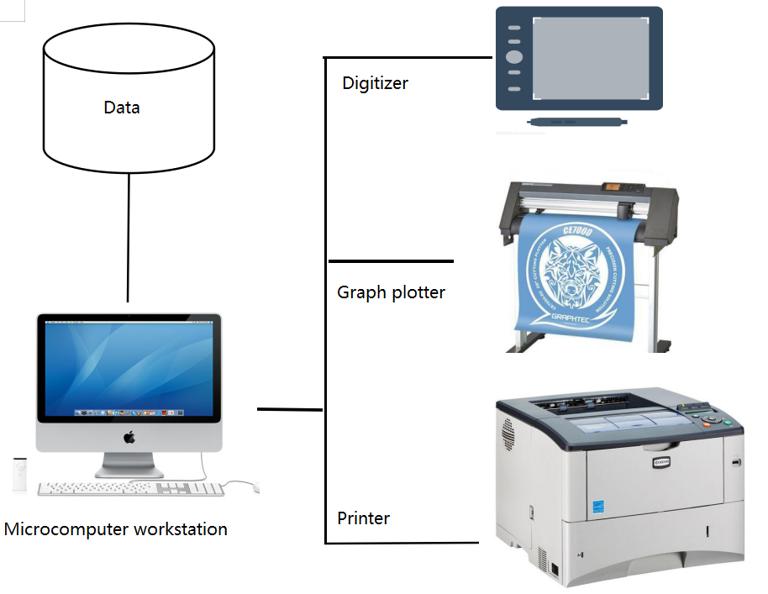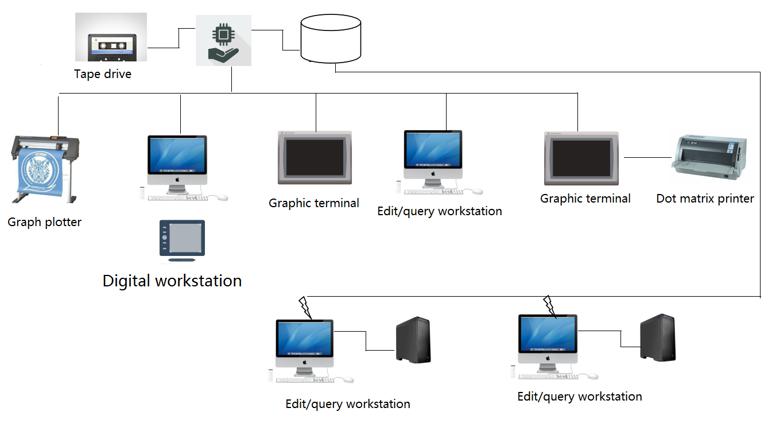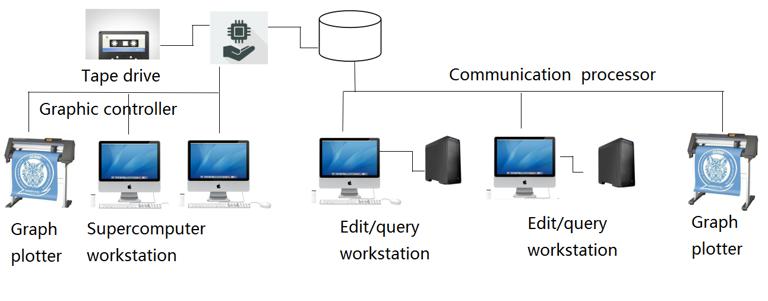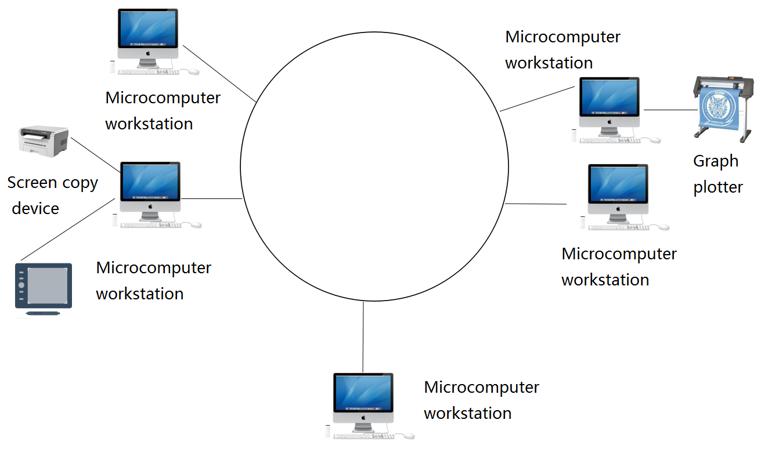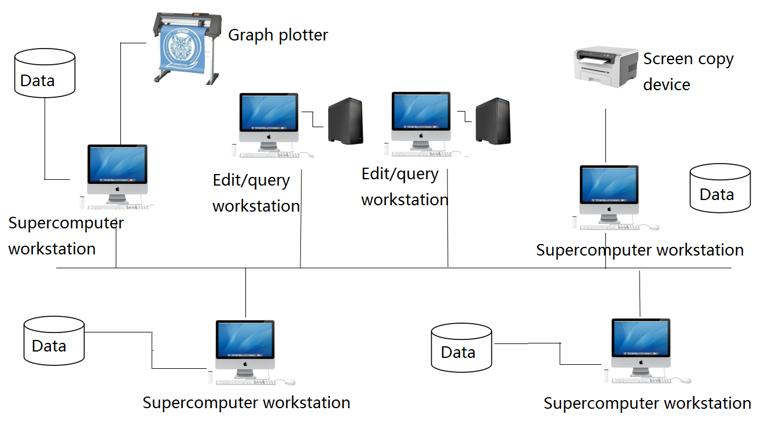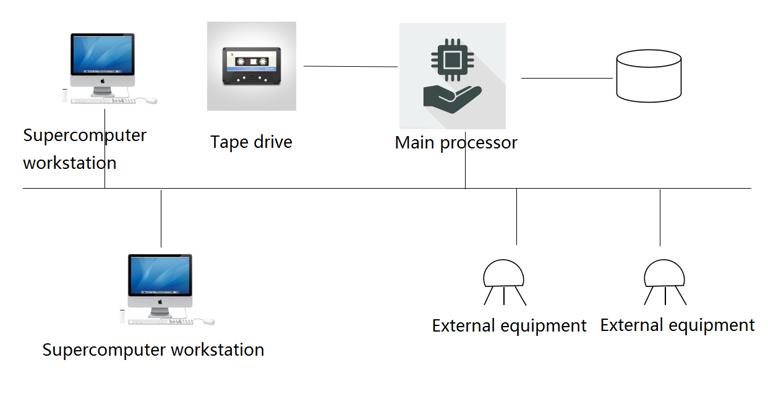Concept design of network geographic information system
Logically speaking, conceptual design based on user’s functional requirements is the first step in most computer network software and hardware configuration design. Conceptual design should be based on the following points:
Have a full understanding of the user’s application intentions;
Grasp the basic concepts of computer hardware and computer communication.
Understanding existing and potentially influential design conditions, including existing software systems and communication facilities;
We should have a full understanding of the computer technology that may affect the system design and the current situation of its development.
The conceptual design should explain the functions and functions of the hardware and software in the GIS network configuration, and describe the relationship between the device and the application, which should be possible to facilitate the re-audit and modification of system functions when the network system is implemented, to facilitate the estimation of system value, and to provide a basis for more detailed special definitions, at the same time, the system should be able to describe new applications, new users and extended databases.
In conceptual design of network geographic information system, centralized, distributed and processing functions must be adapted to specific address conditions and users’application requirements. Some typical conceptual designs and their explanations are given below.
Type One
- Systems and organizational types
A small number of users suitable for local governments and single departments of engineering units are used for data acquisition and map production.
- Address distribution
Single address
- Data transmission operation
There is no special requirement for data transmission between other existing sites, data can be transmitted in batches or through media such as tapes.
- Upgrade possibilities
Host-based networks or networks with other intelligent workstations can be upgraded
Type Two
- Systems and organizational types
As a small multi-user system, it supports data acquisition, map production, database and graphics query applications and serves one or more departments of government agencies, enterprises and institutions.
- Address distribution
With a large number of peripheral processing units assigned to one or several adjacent floors of a building, remote users connect to the system via dial-up.
- Data transmission operation
There is no special requirement for data transmission between other existing sites, data can be transmitted in batches or through media such as tapes.
- Upgrade possibilities
Additional devices can be added to asynchronous ports and upgraded to local area networks
Brief introduction of network interconnection equipment
Repeater: The simplest inter-network connector that provides amplification and forwarding of signals. It can only connect to a LAN with the same physical protocol. The repeater is mainly used to extend the distance of LAN cable segment. In the same LAN, LAN can also be used to extend the medium length.
Bridge: Bridge is a storage and forwarding device that implements LAN interconnection at the data link layer. It is independent of the high-level protocol and can realize the interconnection of heterogeneous LAN.
Router: Router works in the network layer of OSI model, and can get more network information and find the “best route” for the coming information. Router structure is more complex and slower than bridge, but it has greater flexibility and stronger interconnection ability of heterogeneous networks.
Gateway: Also known as protocol converter, it works at the transport layer and above of OSI model, and is used to interconnect networks or media with different architectures. It not only connects separate networks, but also ensures that data transmitted from one network is compatible with another.
Type Three
- Systems and organizational types
Applicable to the organizational structure of medium to large government or enterprises, users access to the mainframe database for query, analysis and mapping
- Address distribution
In the same building, multiple addresses are directly connected; new workstations or other devices can be connected to graphics controllers and communication processors through remote connections.
- Data transmission operation
Periodic data exchange can be carried out by tape and other media, and can also be transmitted by gateway and other computer networks, the transmission of computer data is easy to establish.
- Upgrade possibilities
Devices can be flexibly increased to achieve computing capacity of mainframe processors
Type Four
- Systems and organizational types
For small to medium-sized government departments or companies
- Address distribution
Distribution within the same building
- Data transmission operation
Data interchange can be carried out by means of desktop transmission device or dial-up Internet access.
- Upgrade possibilities
Additional computers and servers can be easily added to the ring network
Type Five
- Systems and organizational types
Suitable for multiple subdivisions of medium to large government, public utilities and corporate organizations requiring extensive mapping and geographic analysis
- Address distribution
In the LAN of the same building or between adjacent buildings, other users are connected to the LAN through long-distance communication lines.
- Data transmission operation
Data transmission is carried out over a network, which can be exchanged remotely through batch data files or tapes, or connected to other networks through a gateway.
- Upgrade possibilities
LANs can be extended to larger areas through repeaters, and multiple LANs can be connected by bridges.
Type Six
- Systems and organizational types
Set up on LAN, support multi-user with host processing unit, suitable for multi-department background
- Address distribution
In the LAN of the same building or between adjacent buildings, other users are connected to the LAN through long-distance communication lines.
- Data transmission operation
Maintaining the main database with the host, data transmission of batch files or tapes can be carried out.
- Upgrade possibilities
External devices, workstations and processing units can be added until network constraints are reached, other buildings can be extended through repeaters, multiple local area networks can be connected by bridges, and gateways can be added to connect multiple networks.
Type Seven
- Systems and organizational types
Configuring multiple processing units and peripherals on the LAN to support multiple functional-related organizations
- Address distribution
Processing units and peripherals are distributed in multiple buildings, and some devices are connected to local area networks via remote lines.
- Data transmission operation
Users can access distributed data in local area networks and access batch or real-time data in other networks through gateways.
- Upgrade possibilities
Externals, workstations and processing units can be added until network constraints are reached, and LAN expansion can be achieved through repeaters or bridges.
Type Eight
- Systems and organizational types
Multi-user data sharing in a system network, or a geographically distributed organization requiring greater data processing capabilities
- Address distribution
Multiple processing units are connected by remote lines
- Data transmission operation
Data updates for single addresses are done in batch files, and access between multiple addresses depends on remote line transmission.
- Upgrade possibilities
Each address can be extended and additional processing units can be added to the remote network.
Several LAN technology standards: Ethernet, Token Ring and FDDI
The Institute of Electrical and Electronic Engineers (IEE) has defined some LAN standards, collectively referred to as IE802, including CSMA/CD (Carrier Sensing Multiple Access with Conflict Detection), Token Bus, Token Ring, and FDDI (Fiber Distributed Data Interface, Fiber Distributed Data Interface) for high-speed LAN applications. Following is a brief introduction to several commonly used technical standards.
- IEEE 802.3
CSMA/CD, which uses CSMA/CD to access and transmit data over a local area network. If a node wants to send a message, first check the communication channel to see if data transmission is in progress. If not, you can use the line to send your own message, otherwise you must wait until the channel is idle. If two nodes attempt to send a message at the same time, a collision occurs, at this time, the two nodes each wait for a random length of time and then resend the previous message. In the earliest 802.3, the transmission rate was specified to be 10 Mbps, using a 50 ohm cable, and these were changed. Because of its transmission cable, many people call it Ethernet, and its cables are as follows, as shown in Table 13-6.
Table 13-6: Common types of Ethernet cables
Name |
Cable |
Maximum length |
Maximum node per segment |
Benefit |
|---|---|---|---|---|
10Base5 |
Coaxial cable |
500 meters |
100 |
It can be used as backbone line |
10Base2 |
Coaxial cable |
200 meters |
30 |
The lowest price |
10Base-T |
Twisted pair |
100 meters |
1024 |
Easy maintenance |
10Base-F |
Optical fiber |
2000 meters |
1024 |
Can be used between buildings |
- 2. IEEE 802.4
Token Ring Network. In Token Ring, there is a special data packet called a “token” that is sent from one node to another along the network, the token contains special control signals, enables the node to know whether the token is currently carrying a message or is in an idle state and can receive a message. If the token is idle, the node needs to issue a message to “capture” the token and attach its own message, and then the token can no longer carry other messages unless the current message is “delivered”.
- 3. FDDI:
FDDI is a high-performance fiber-optic local area network, its transmission rate is 100 Mbps, transmission distance can reach 200 KM, during which 1000 workstations can be connected. FDDI is similar to the LAN of the IEEE 802 specification. However, because of its high bandwidth, which can be used as the backbone network to connect the copper LAN.

